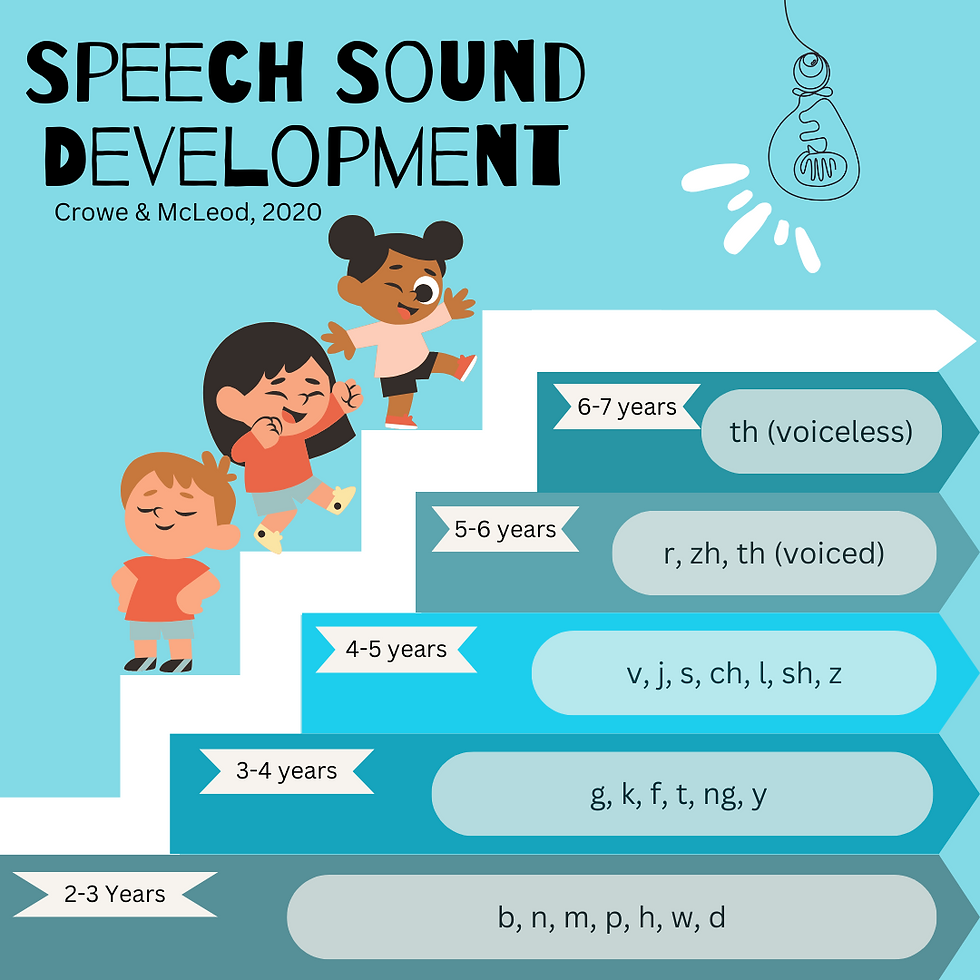The Ultimate Guide to ARTICULATION for parents
- Erin Swinkels
- Sep 28, 2023
- 3 min read

So your 4 year-old is chatting up a storm, but you notice they are missing or replacing some sounds. For example, a lion is wion, come is tum, both is bof and so on.
This can make understanding your child challenging at times!
We recently shared information about speech sound development and speech intelligibility. You can follow the link to check out our posts or click to expand the photos here. For many kids speech substitutions and errors are common! These resources will help you understand if the specific sounds your child is missing or substituting are expected for their age, and, if overall you understand their communication as expected for their age. We don't expect to understand everything our 4 year olds say, especially not the first time they say it!
In the future we will review other types of speech errors called phonological processes. For today, we are going to talk generally about WHERE and HOW individual sounds are made.

WHERE:
Speech sounds are made:
with your lips (bilabial)
with your teeth and lips (labiodental)
with your tongue tip between your teeth (interdental)
with your tongue tip raised on the ridge behind your front teeth (alveolar)
with your palate, or the roof of your mouth (palatal)
palatal sounds also include y, r, ch & j
with your tongue back (velar, glottal)
velar sounds also include w (this sound is also made by rounding your lips)
HOW:
Speech sounds differ on whether the sound is VOICED and the MANNER in which the sound is made.
1. Voiced & Voiceless Sounds
Voiced sounds require the speaker to "turn on" their vocal cords or "voice box"
There are pairs of sounds that are the same PLACE & MANNER and only change because one is VOICED and one is VOICELESS (see chart)
2. Manner
This is where things get a little more technical. Speech sounds can be made in the following ways:
Nasal sound - where the airflow goes through your nose instead of your mouth
Stop sound - where the airflow stops after the sound is made (closure of articulators and release of sound)
Fricative sound - where the airflow is slightly obstructed while making the sound; the sound can continue until you run out of breath
Affricate sound - these are a stop sound combined with a fricative sound
Did you know? "ch" is actually "t" + "sh" and "j" is actually "d" + "zh"!
Liquid sound - these are sounds made when the tongue is more relaxed, with relatively free airflow
Glide sound - these are consonant sounds that have characteristics of vowels
Check out all the English sounds in this handy chart:

SLPs use the International Phonetic Alphabet (IPA) to represent sounds an individual is making as conventional spelling often has more than one way to represent a sound (e.g., /k/ can be spelled with a "c" as in cat, or a "k" as in kite).
Speech sounds are the sounds children use to communicate when babbling and when forming syllables, words, phrases & sentences. They are acquired gradually, with certain sounds typically mastered around specific ages. It's important for parents to monitor their child's speech development and seek professional guidance if they have any concerns.
This post generally reviewed the acquisition of the majority of individual English consonants and did not review English vowel sounds. When individual sounds are used in connected speech, such as at the word or phrase level the analysis of speech sounds gets a little more complex.
If your child is extremely hard to understand or you have concerns about their speech errors, we recommend connecting with a speech language pathologist (SLP).











